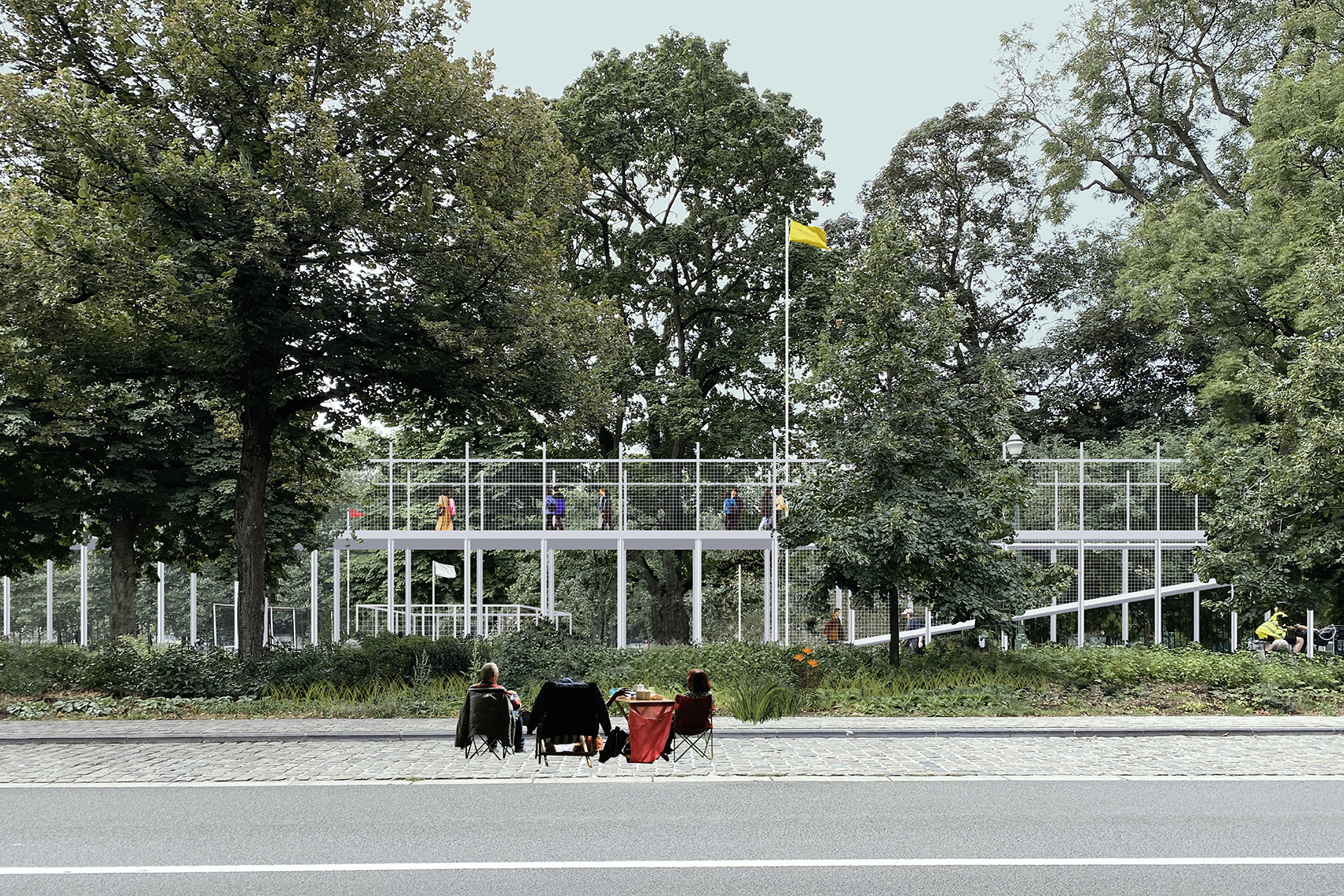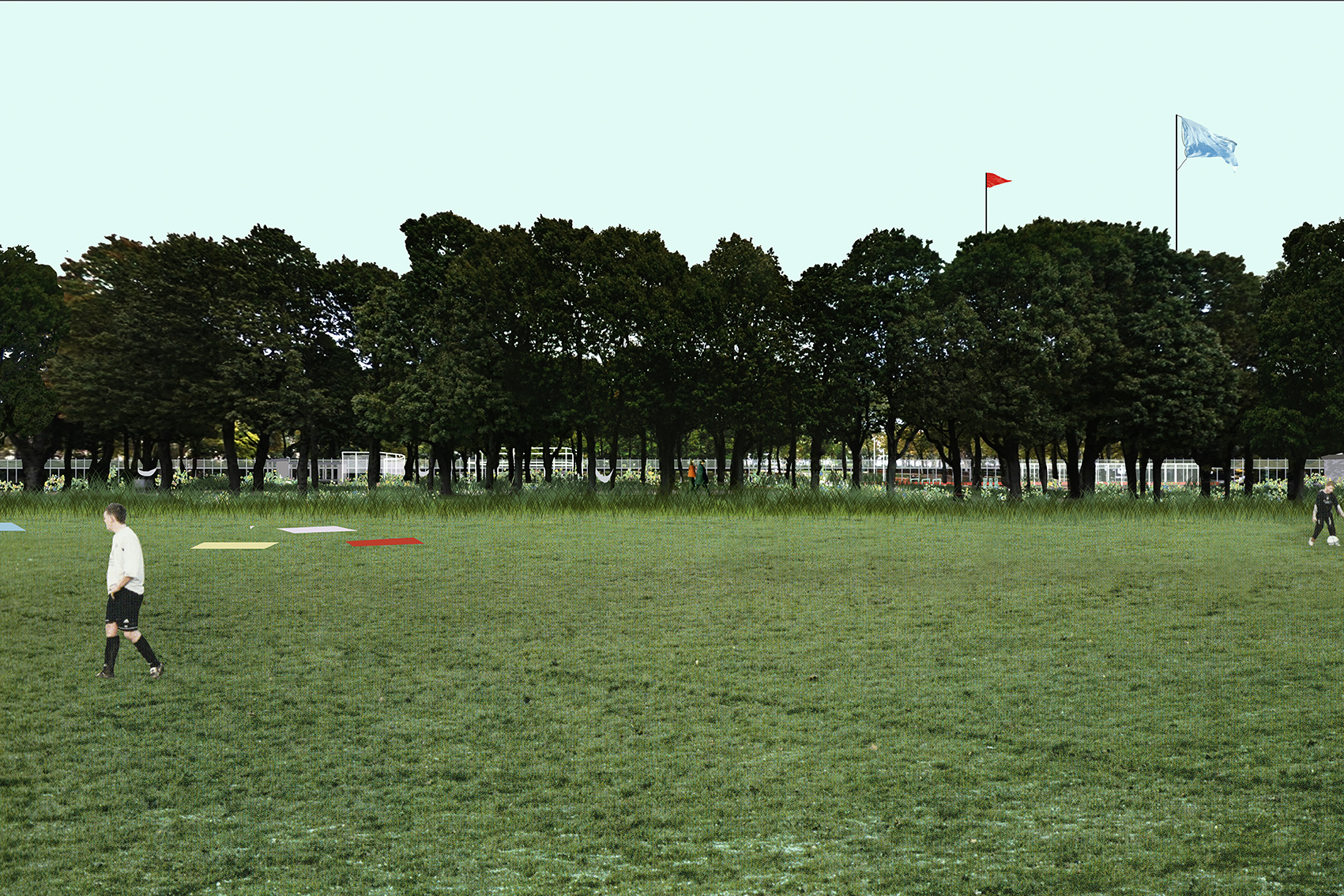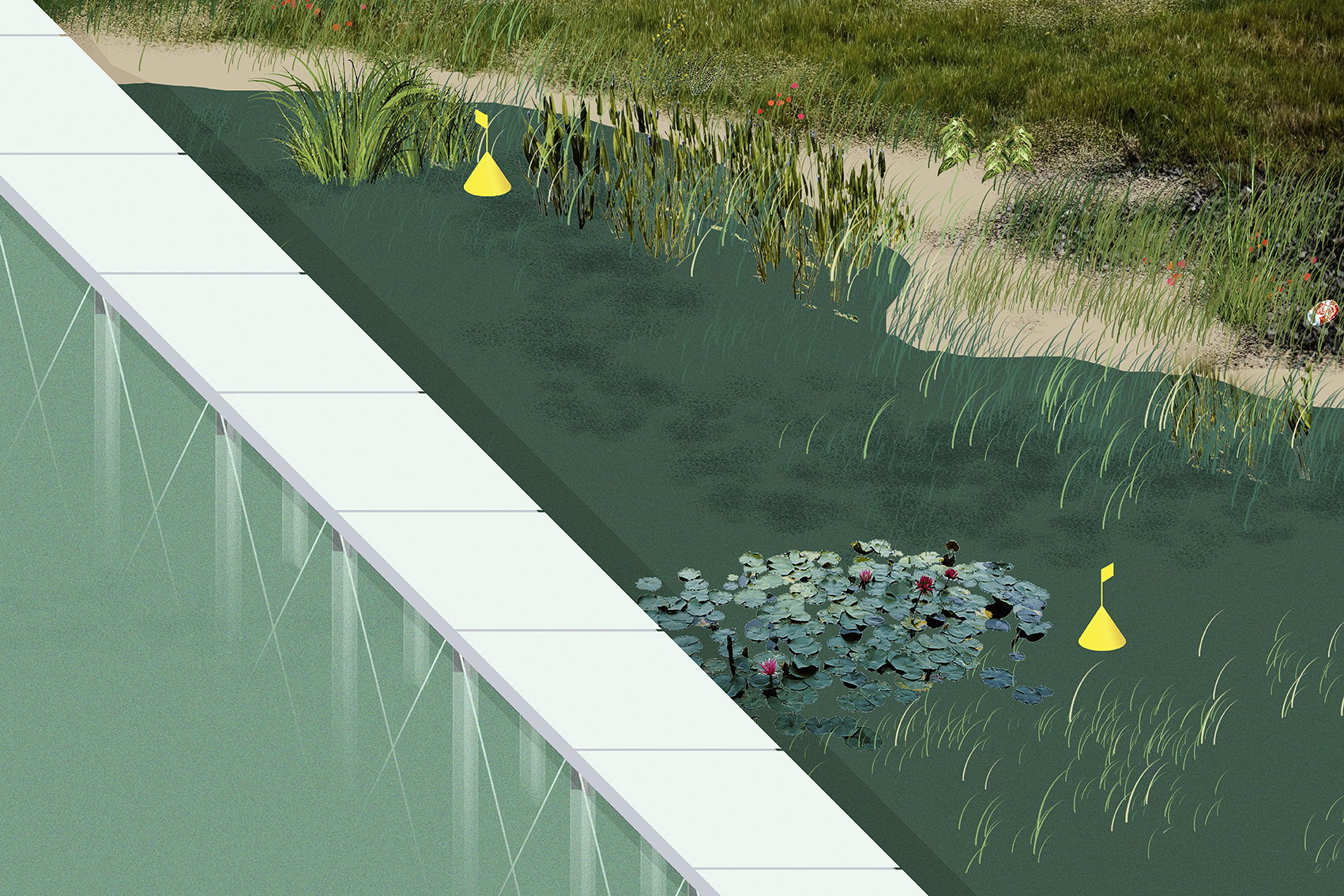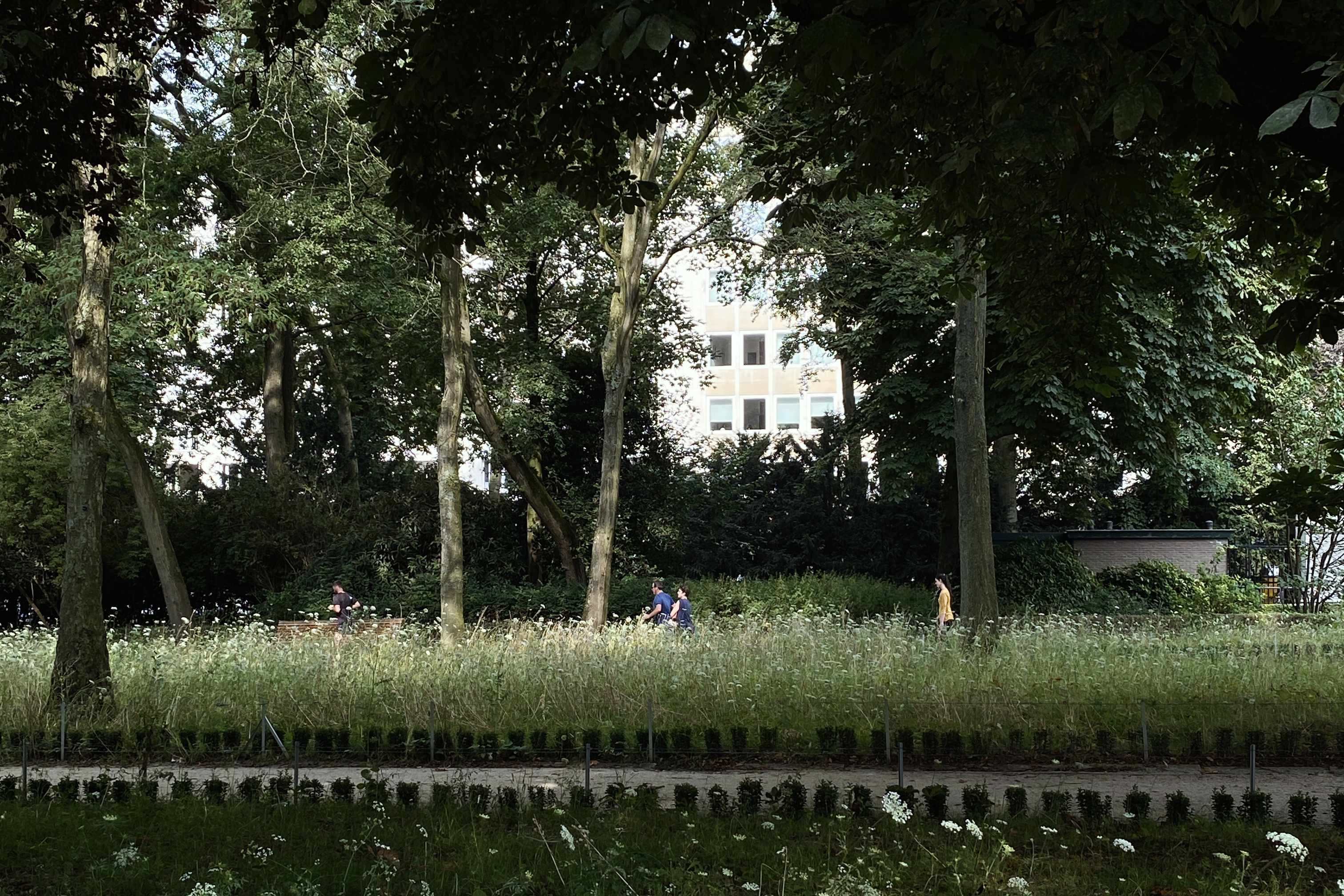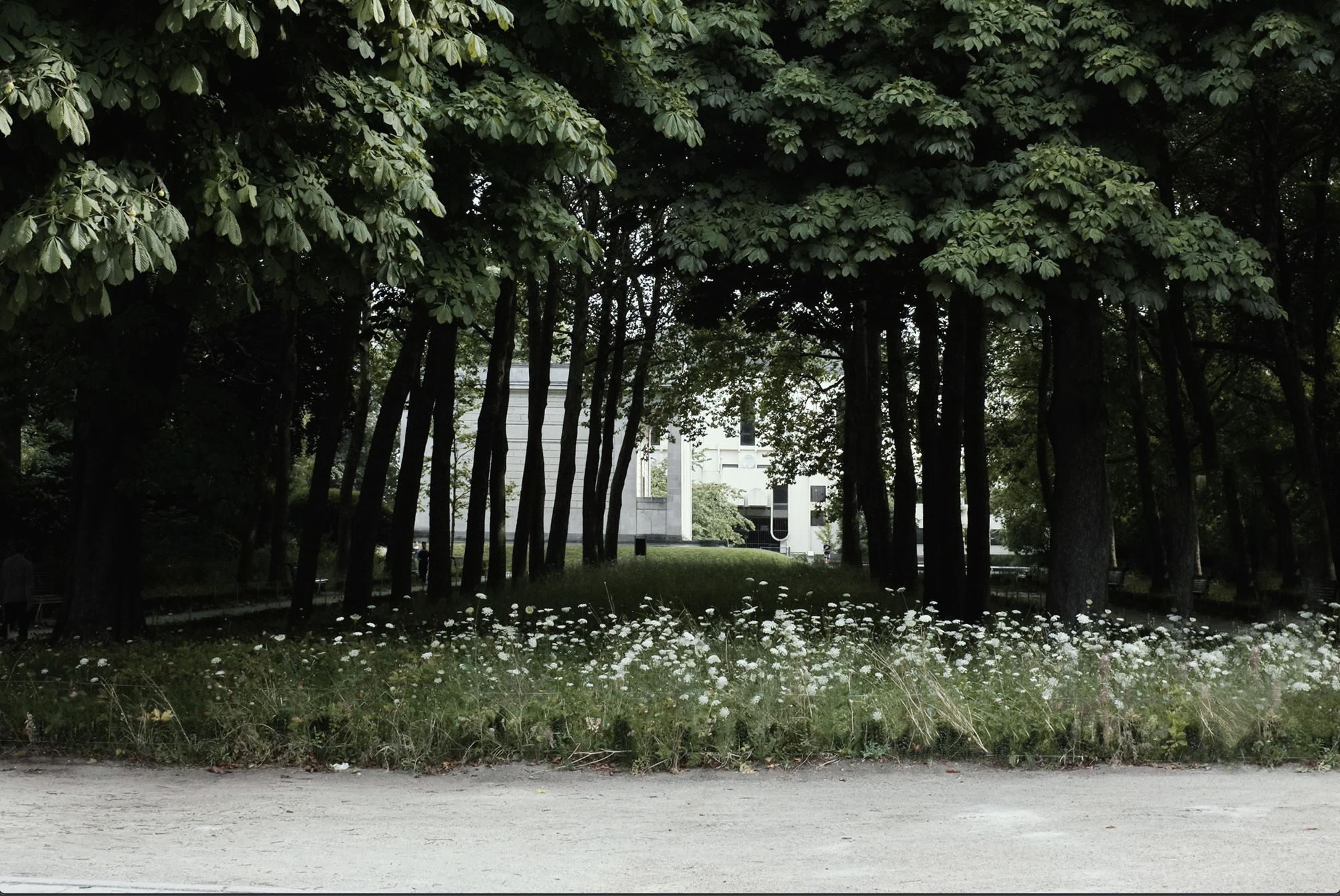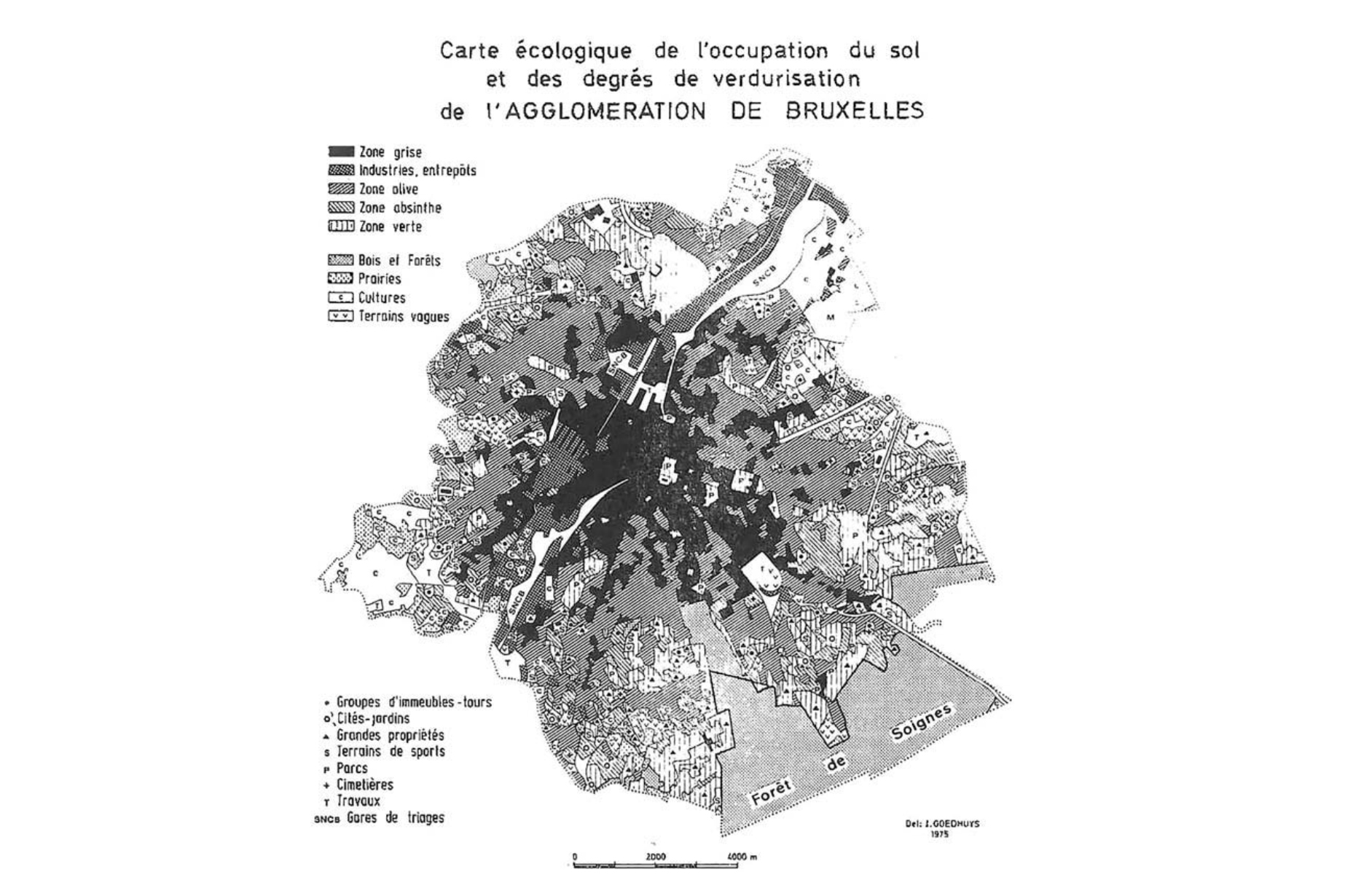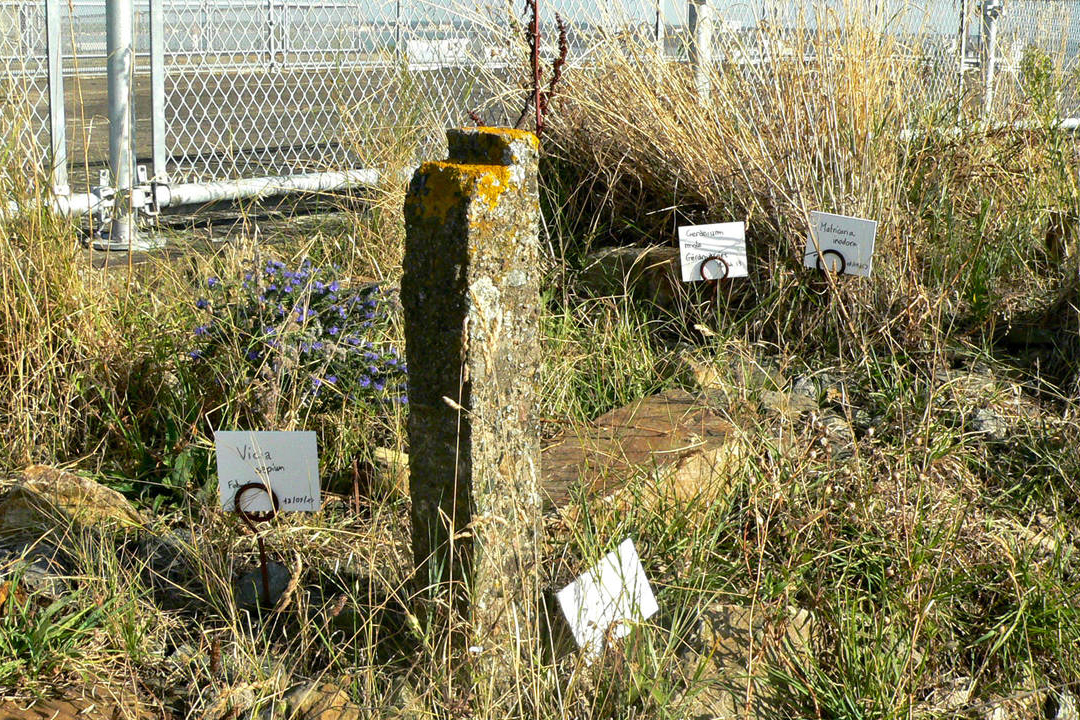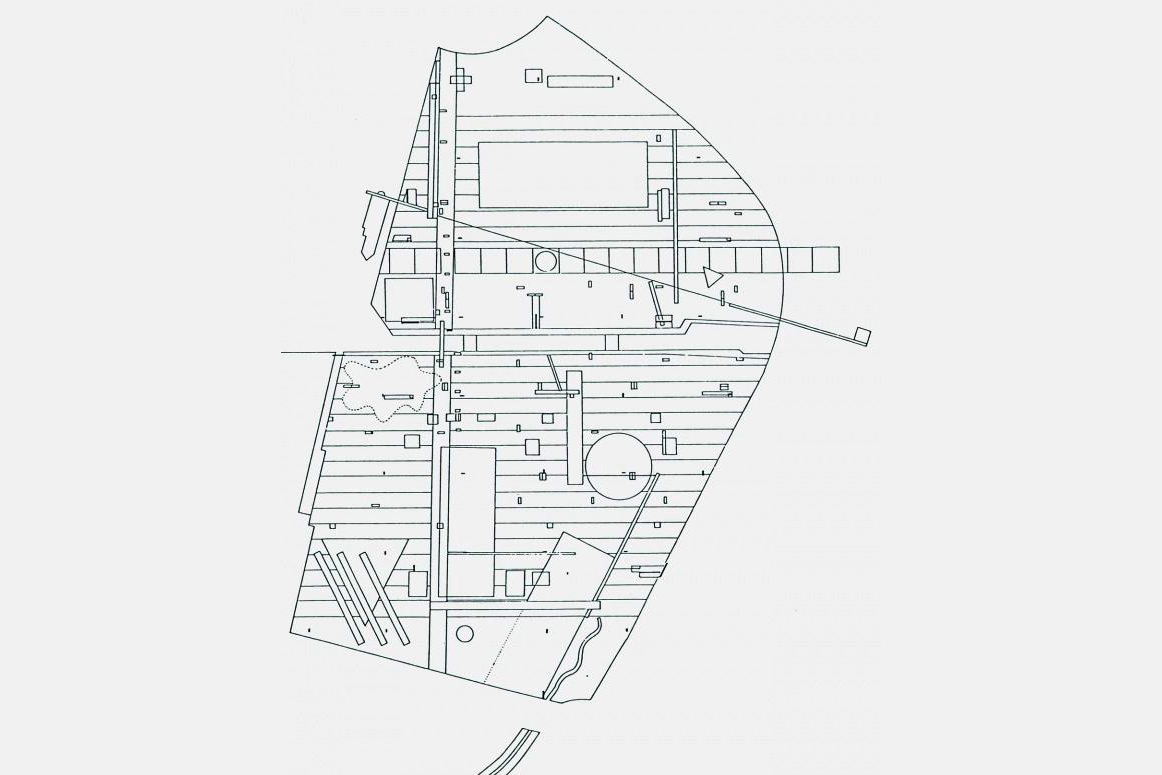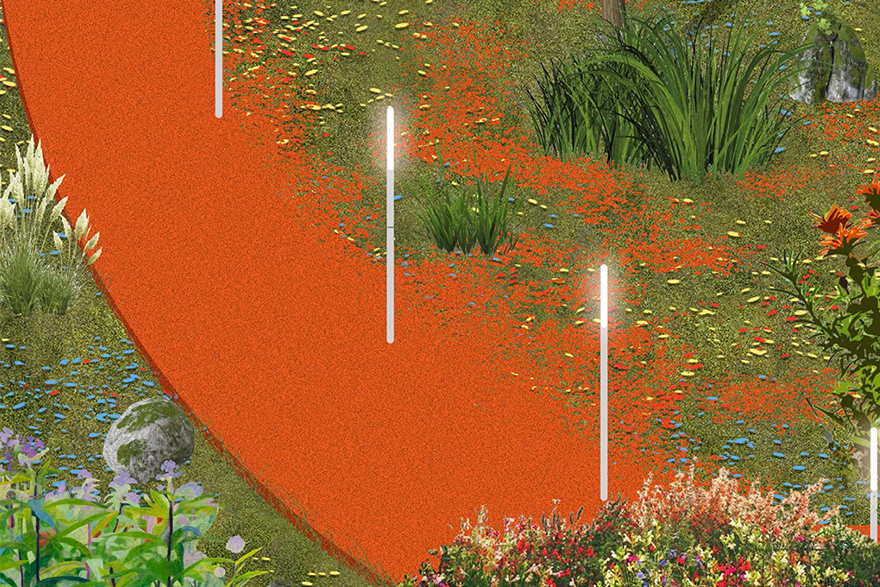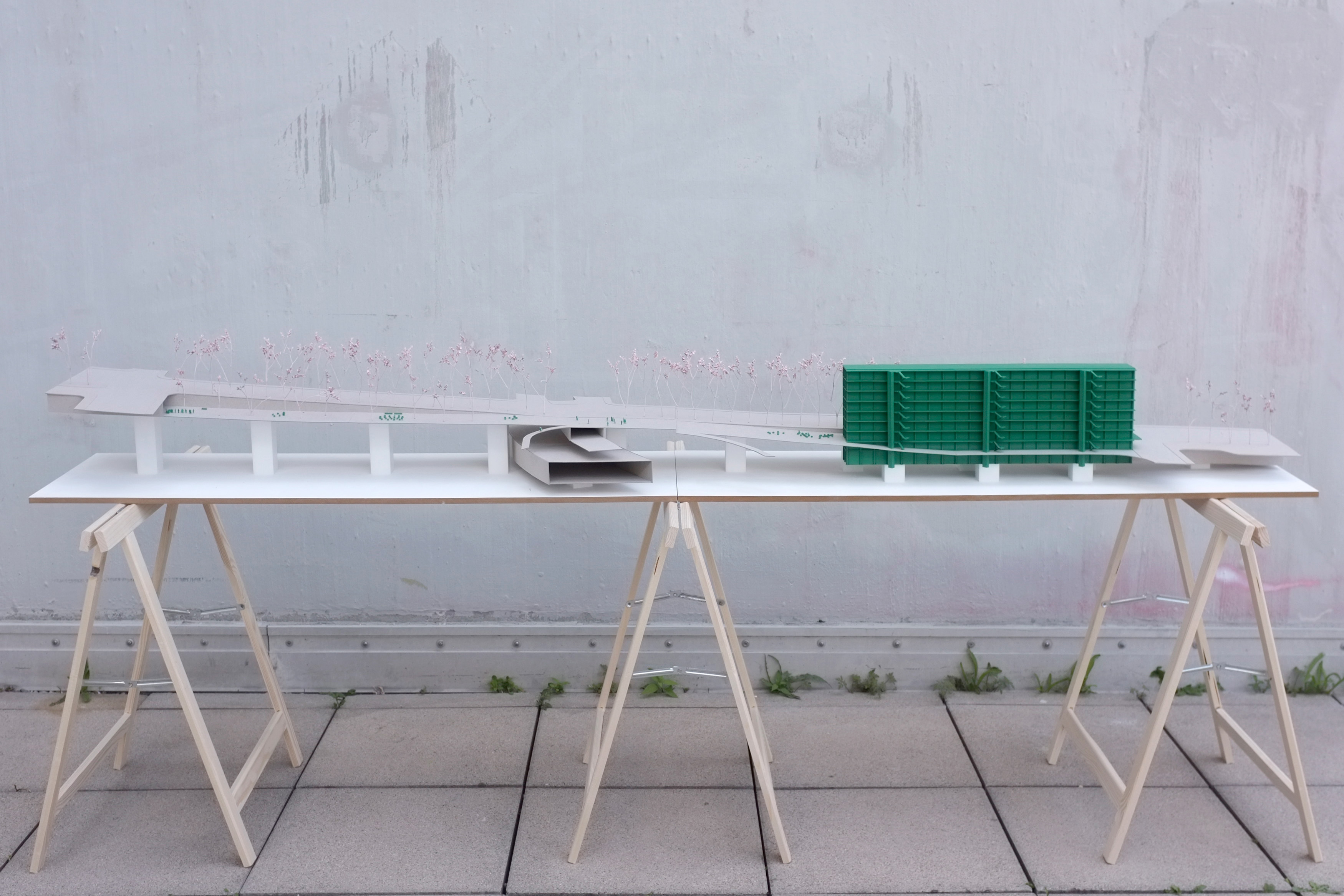Daily Camping
Brussels (BE) - Special Mention

TEAM DATA
Associates: Celeste Tellarini (IT) – architect urbanist, photographer, Xander Wilhelm (DE) – architect urbanist, designer, geographer
celeste.tellarini@gmail.com
www.amultitude.xyz
See the complete listing of portraits here
See the site here
TEAM PORTRAIT
VIDEO (by the team)
INTERVIEW
Click on the images to enlarge
1. How do you define the main issue of your project in relation with the theme “Living Cities Imagining architecture taking care of the milieus”? And in which way do you think your project can contribute to an ecological and/or social evolution?
There are many themes overlapping and intertwining in Daily Camping, all rising from specificities of both the site of Parc du Cinquantenaire and the city of Brussels as a whole. On an ecological level, we embrace a broader meaning of ecology where difference and complexity are welcomed as fundamental principles to create atmospheres for human and non-human interactions. We escape imaginaries of dichotomous notions of natural and artificial, We focus on revealing potentials of an ever-changing landscape based on spontaneous compositions of plants, bacteria, fungi and animals instead of human-centred aesthetics. The whole ecology of the park finds its structure on a combination of strategies and approaches: rainwater management, diversification of soil’s conditions and flora and fauna enhancements. On a social level, our main aim was to challenge the monumental character of the park and implement a strategy for its decolonization. This is achieved by avoiding a superposition of an additional layer of monumentality and by choosing contextualisation over deletion. Here a strategy is outlined over multiple themes: decolonization, social infrastructure, learning landscapes and a framework for shared resources to reach equality and accessibility in public space.
2. How did the issues of your design and the questions raised by the site mutation meet?
We believe that to answer to the brief in a way that would have been relevant to the political, social and ecological contemporary discourse, some of it points had to be challenged. Clear examples are the mentioned emphasis on the axis Schuman-Merode, the request to conceal the car tunnel and consequentially, the defined intervention zone. The project escapes the intervention zone and starts with its first implementations in the EU quarter. Here a series of facilitators aim to regain sense of belonging in what we defined as ‘social desert’. Generally, our aim was to challenge the monumental character of the park, at the same time addressing social inclusion and equality and ecological enhancement. Approaching the park, we recognised that its most important role is what it already is: fundamental part of Brussels inhabitant’s everyday life. Thus, our aim has been to enhance its current state while structuring its sustainable and realistic evolution towards a more complex ecosystem and social/cultural infrastructure.
PROJECT:



Interest in these topics exists in both of us since some time. We have already experimented with these themes in the past but in different constellations: Celeste through A Non-Binary Ecology (E16 winning project) and other collateral works; Xander with his proposal for the botanical garden in Brussels and as a geographer. Reference to us has been the city of Brussels and a critical understanding of its social and ecological development. Furthermore explorations on the city as an ecosystem, as Paul Duvigneaud did in the 1970s.
SITE:



We recognise that there are two different types of timing involved: the one dictated by human actions – like the implementation of small structures or removal of a fence – and the one of long term natural processes – the rewilding and nature restoration. While the first one is the result of active processes and short times, the latter is responding to a different speed, dictated by passive situations and the spontaneous processes of nature. Nonetheless, implementation could start as soon as tomorrow thanks to the fact that it is structured on a clear set of actions and processes of care. A multitude of institutions would have the chance to contribute but we recognise that the greatest impact would be the one of the park’s daily users and Brussels’ inhabitants.
REFERENCES:



We have already been collaborating on a variety of projects in the past and always found a deep correspondence between our interests. We quickly discovered that our skills were similar yet complementary. While we are both trained as architects, we also individually work in other fields like urbanism, photography, design and geography. A reciprocal influence of these differences is always good.
6. How could this prize help you in your professional career?
In the framework of this Europan, what we value the most is the opportunity we had to work on such a crucial and complex part of the city. We believe this experience and some of the themes we raised through the research and the design will influence our future work. We hope the future debates and confrontations between the selected teams and the involved institutions will bring the project forward.
TEAM IDENTITY
Legal status:
Team name:
Average age of the associates: 30,5 years old
Has your team, together or separately, already conceived or implemented some projects and/or won any competition? if so, which ones?
In the past years we confronted the city of Brussels through multiple self-initiated projects, both individually and as a team. Examples are The Wandering Ape, on new-nomadism and sense of belonging (Tellarini), the proposal for Botanique, transforming a park and its autotunnel (Wilhelm). Additionally, in 2021 Celeste won Europan 16 with the project A Non-binary Ecology. The project envisioned a spontaneous and non-conforming transformation of the former military site of Sart-Hulet in Namur (BE).
WORKS:



